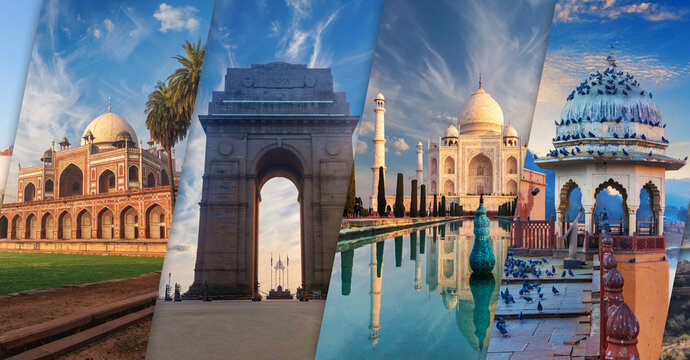
North India has been calling people to be amazed by the spectacular variety of royal palaces, old forts, and other rich monuments that tell about a great past when maharajas were the lords of big empires. It is a magical land replete with an experience into centuries of architectural genius, cultural sensitivity and royal magnificence that still mesmerizes smart travellers all over the globe.
The route of the golden triangle Jaipur, Agra and Delhi, makes up the core of North Indian royal percentage. Again, the capital, Delhi, embodies itself as a magnificent starting point to the imperial heritage of the region. The Red Fort is one of the examples of Mughal architecture whereas India Gate and the magnificent Rashtrapati Bhavan demonstrate the presence of the colonial rule. The two contrasted scenes: the busy bazaars of Old Delhi to the broad avenues of New Delhi make a striking congruence between the antique and modern India.
Agra is the worthy of the famous Taj Mahal is the pinnacle of all Mughal art. This marble white mausoleum was constructed by the emperor Shah Jahan to commemorate his wife, Mumtaz Mahal and is one of the greatest architectural wonders the mankind has ever made. The close-by Agra Fort designed with red sandstones and enriched with inlay works serve the purpose of reminding people of the luxurious life of the Mughal emperors. The deserted city of Fatehpur Sikri, located outside of Agra, is the epitome of architectural brilliance of Akbar and his palaces and courtyards in the city remain in a pristine shape.
Jaipur, the Pink City of Rajasthan is nothing but an embodiment of the royal Rajputana heritage and architecture. The stunning City Palace complex remains the home of the royal family, and the museums in it sport an incredibly rich trove of royal items such as art, textiles, and weaponry. The Hawa Mahal features an ornate facade resembling a honeycomb design and it was built so that the royal women could see the goings-on in the streets and at the same time have their privacy. The grand Amber Fort which stands tenaciously on top of a hilltop can also give the visitor the privilege of arriving on an elephant, as it has always happened to the royalty.
North India includes a vast royal heritage of such magnificent cities as Udaipur, so-called the Venice of the East. Lake Palace that appears to be floating on Lake Pichola is a symbol of luxury and romance and has even made an appearance in the countless films. The City Palace of Udaipur, running along the eastern side of the lake, represents four hundred years of architectural development of successive rulers that merged harmoniously with the rajasthani and Mughal flavour.
Jodhpur, the Blue City, is permeated by the blue-colored Mehrangarh Fort, and presents a visitor with the opportunity to experience living heritage. Most of the former royal palaces have been turned into very luxurious hotels where guests can enjoy a night in the room formerly inhabited by maharajas. These palatial lodgings offer a royal flavor because of intricate carvings, mirror work and fresco paintings they have.
The royal heritage experience is further enriched with the hill stations of north India. The summer capital of the British empire is now called Shimla. This city with Victorian architecture and endless estates preserves the aura of British rule. A ride on the toy train to Shimla across the foothills of the Himalaya provides a magnificent view on the one hand and a nostalgic look back to the languorous sense of colonial living on the other.
Modern luxury North India tour packages have evolved to cater to sophisticated travelers seeking authentic royal experiences. These carefully orchestrated tours can include stays in erstwhile royal palaces in the form of luxurious hotels, guided itineraries accompanied by learned historians, unique presentations of local culture and fine cuisine in the form of royal gastronomic meals. The experiences included in many of the packages are also custom as they include sunrise trips to the Taj Mahal, an elephant polo match or a ride in a vintage car through palace grounds.
The food heritage of the royal courts of North India is another dimension of luxury to these trips. The sumptuous Mughlai food of Delhi and Agra and the colorful Rajasthani plates served as per royal place settings, every meal is made to be a tale of Royal cuisine. Demonstration cooking programs and spice gardens help them to learn how complicated and advanced royal kitchens could be.
Northern India has a rich royal legacy, not only because it has architectural wonders that are the embodiment of the rich culture, but because the history is alive and traditions seem to be in their good place. The golden awesomeness of this region is not simply limited to its extraordinary monuments but also the capacity of transporting people towards the past decades of unmatched luxury, artistic work and culture. This ageless appeal makes North India the inevitable place of travel to explore the royal past of India expressly by covering with modern luxuries.






